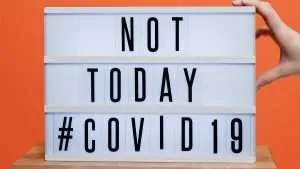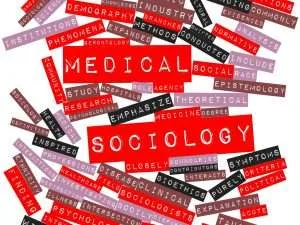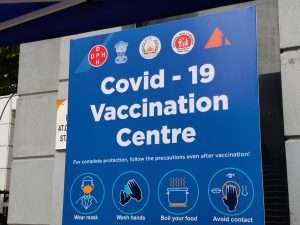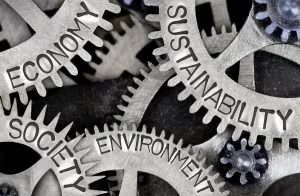In April 2024, the American Sociological Association’s Committee on the Status of LGBTQ People in Sociology released a public guide on “Public Policy and the Well-Being of Transgender and Gender Diverse Youth in the United States.” Headed by the committee’s co-chairs, Drs. Harry Barbee and Kathleen E. Hull, the guide aims “to offer clear, accessible, and up-to-date information that helps the public better understand transgender (TGD) youth, the policies that are targeting them, and the harmful consequences of those policies.”
The guide exemplifies what applied and public sociology is all about by providing the public with sociological tools to improve the well-being of society. As an organization that exists to build a bridge between sociology and everyday life, Applied Worldwide was eager to celebrate this sociological resource!
Continue reading for an exclusive interview with the guide’s authors, Drs. Barbee and Hull.
How does your expertise as sociologists make you uniquely fit to speak on policies impacting transgender and gender diverse youth?
Dr. Barbee: For over 10 years, I have been studying how transgender and gender diverse people’s life experiences and circumstances influence their health and well-being. After I received a PhD in sociology in 2020 from Florida State University, I went on to complete a 2.5 year postdoctoral fellowship at Vanderbilt University, where I worked among an interdisciplinary group of scholars in the LGBTQ+ Policy Lab. In 2023, I began my current role as an Assistant Professor in the Bloomberg School of Public Health at Johns Hopkins University. There, I teach a graduate level course called “Epidemiology of LGBTQ Health.”
Broadly, my research investigates health and aging among LGBTQ+ populations. For instance, I have studied how LGBTQ+ supportive workplaces, healthcare environments, and policy landscapes influence health outcomes among LGBTQ+ people. Much of this work has been supported and funded by the National Institutes of Health. Since 2020, I have turned my attention to better understanding the effects of state-level legislation that restricts rights and services from transgender and gender diverse individuals, particularly youth. This work has been published in some of the top medical journals, including JAMA Pediatrics, JAMA Health Forum, and JAMA Surgery.
Dr. Hull: I am a sociologist specializing in the sociology of culture, law, sexualities, family, and social movements. I am currently Professor and Chair of Sociology at the University of Minnesota – Twin Cities, where I have been on the faculty since 2001. I did my graduate work at Northwestern University (Ph.D., 2001), where I wrote a dissertation on same-sex marriage that I eventually published as a book, Same-Sex Marriage: The Cultural Politics of Love and Law, with Cambridge University Press (2006). I have also researched close relationships and conceptions of family among LGBTQ people, the association between sexual identity and relationship values among young adults, the role of social science expertise in same-sex marriage litigation at the state and federal level, and coming-out experiences among transgender adults. My peer-reviewed papers have appeared in the Journal of Marriage and Family, Law & Society Review, Annual Review of Law and Social Science, and other sociology and interdisciplinary journals.
Can you share a bit about the process of compiling the guide, including how this project came to be in the first place?
We co-chair the Committee on the Status of LGBTQ People in Sociology in the American Sociological Association (ASA). A couple of years ago, in response to the rapid spread of bills targeting (TGD) youth, the committee came up with the idea of producing a public resource guide drawing on the best available social science evidence to counter the harmful myths and disinformation being disseminated about transgender people and TGD youth specifically. The first step was submission of a project proposal for review and approval by ASA Council, the main governing body of the association.
After we got the green light from ASA Council, we conducted a series of interviews and focus groups with leading sociologists in the field of trans studies. We also completed an exhaustive review of relevant literature in the social sciences, including sociology, psychology, public health and other related disciplines. Based on these efforts, we drafted a report that applied a sociological lens to the policy debates on TGD youth. ASA then sent the draft report out for anonymous peer reviews. We revised the report to respond to the peer reviews and resubmitted it to ASA late last year. This past March, ASA Council approved dissemination of the report as an ASA publication.
Who do you hope this guide will reach and why is it important for them to see it?
We hope to reach the general public with this resource, and specifically parents, teachers, religious leaders, legislators and policymakers who are confronting questions and debates about TGD youth and their needs. As we state in the report, our goal is to “offer clear, accessible, and up-to-date information that helps the public better understand TGD youth, the policies that are targeting them, and the harmful consequences of those policies.” There is a voluminous body of relevant research across several disciplines, and we seek to condense and translate the findings of such research for interested non-academic readers.
If you had to choose just three important take-aways from the guide that you hope readers will take with them, what would those be?
- State-level legislation that restricts transgender and gender diverse youths’ access to resources and services causes real harm to the youths, their families, and their communities.
- The current wave of discriminatory legislation targeting transgender and gender diverse youth is not new, but actually part of a long history of attempts to oppress LGBTQ+ people by casting them as immoral, dangerous, and deviant.
- People who want to be allies to transgender and gender diverse individuals can do so by building affirming and supportive spaces within schools, workplaces, families, places of worship, and healthcare settings.
Final Thoughts from the Guide Authors
We believe that it is incumbent on sociologists, and scholars more broadly, to use our expertise and skills to improve the life conditions among people who have been marginalized and continue to face systemic marginalization. In creating this resource guide, we aimed to marshal our knowledge of inequality, social movements, and gender to help non-academic audiences better understand how anti-transgender legislation causes harm.







